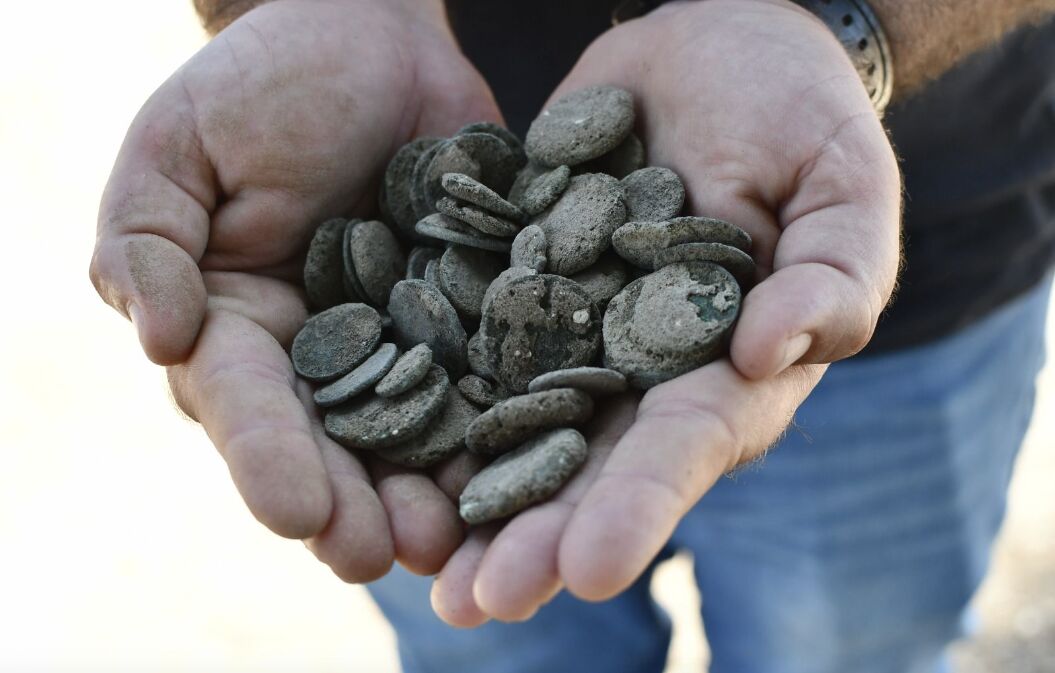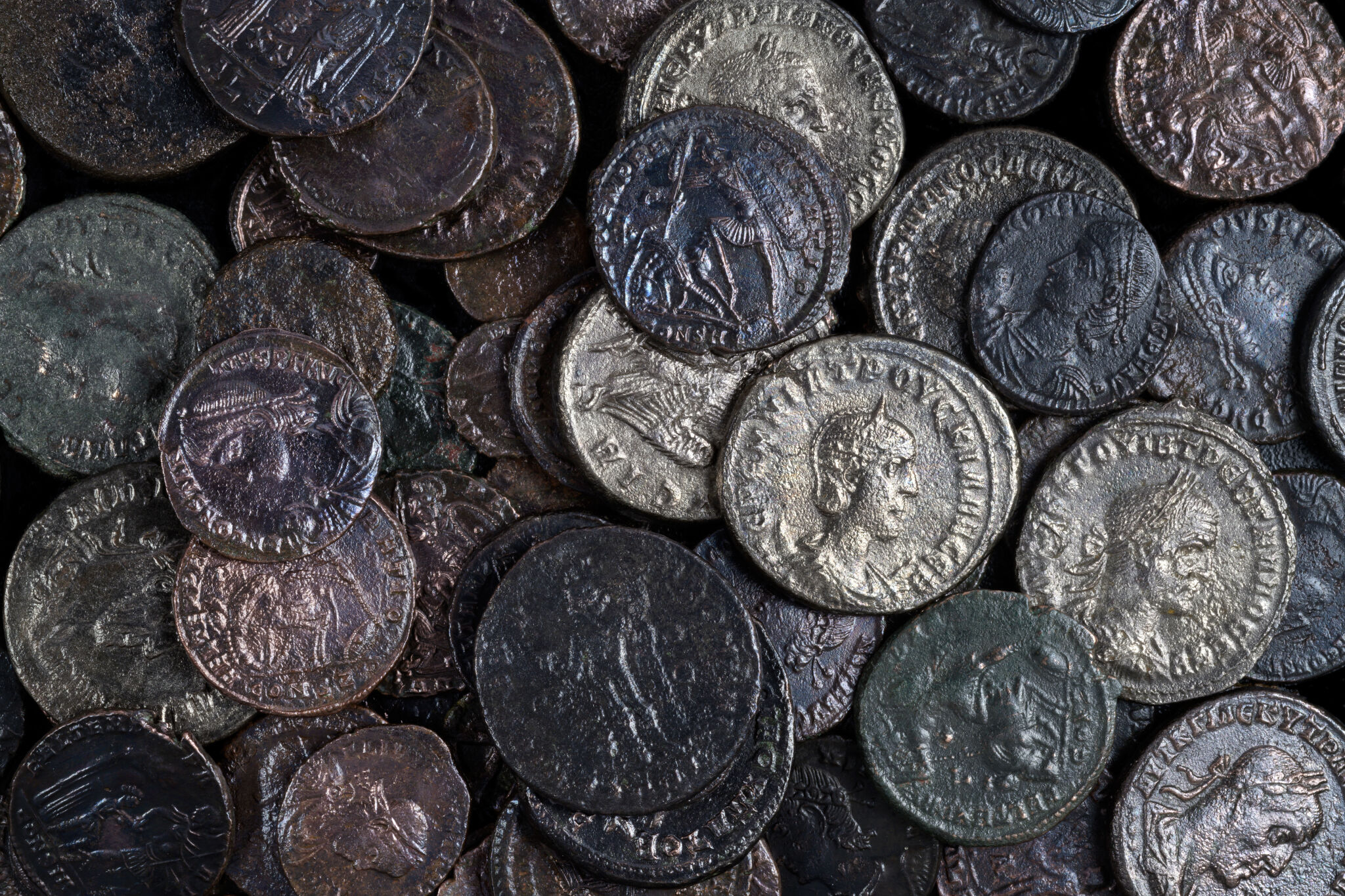Dramatic evidence for the last Jewish revolt against the Romans—the comparatively obscure Gallus Revolt of 351–354 c.e.—has been discovered for the first time at Lod.
Excavations carried out by the Israel Antiquities Authority (iaa) and the Lod Municipality at Nordau Street (about 15 kilometers southeast of Tel Aviv) have revealed an impressive hoard of nearly 100 silver and bronze coins hidden in the floor of a once impressive, large Jewish public building of the fourth century c.e. The building suffered a violent destruction. It’s clear the treasure hoard was deliberately hidden just prior to the destruction in order to be retrieved later on.

The latest of the coins date squarely to the time of the Gallus Revolt, a lesser-known uprising named after Flavius Claudius Constantius Gallus, who ruled as Caesar of Rome’s eastern provinces between 351–354 c.e. Gallus, brother-in-law to Emperor Constantius ii (who was the son of the famous Roman emperor Constantine the Great), presided over a period of intense upheaval between Christians and Jews during this new period of Roman Christian rule. The revolt was put down by Gallus’s general, Ursicinus.

“Though written evidence is sparse regarding this revolt, there are texts reporting that major Jewish communities such as Lod, Zipori and Tiberias were destroyed by the forces of Roman Caesar Flavius Constantinus Gallus,” the press release noted. While much of this revolt centered in the Galilee region, texts of the period do mention the destruction of Lod in the south; now, for the first time, we have evidence of this.
Other finds discovered in the remains of the Lod building include “impressive stone and marble artifacts; Greek, Hebrew and Latin inscriptions, and one inscription bearing the name of a Jewish man from a priestly family, which is still being studied.” The inscriptions, as well as the complete absence of pig bones among the site’s faunal assemblage, help to confirm the building’s association with the Jewish community. iaa Council Head Prof. Joshua Schwartz, who studies Talmudic-period Lod, summarized the structure, stating:
It is difficult to determine if this magnificent building served as synagogue, study hall, meeting hall of the elders, or all three of these functions as one. But what is clear is that the building’s size, the coin hoard, and the assemblage of archaeological finds produced by the excavation, fit well Lod/Diospolis’s description in both Jewish and non-Jewish sources as a center of Torah-true Jewish life in the Mishna and Talmud periods. Lod’s role as a leading community with elders continued from after the destruction though to this moment when it was cruelly cut down in the Gallus Revolt.
Site excavators Shahar Krispin and Mor Viezel of the iaa added:
In all likelihood this is a magnificent Jewish building that housed the city’s elders. From Talmudic writings we know that Lod was a significant Jewish center in the aftermath of the second temple’s destruction in Jerusalem. Some of the renowned “Sages of Lod” are Rabbi Eliezer ben Horkanos, Rabbi Tarfon, Rabbi Akiva, Rabbi Yosi HaGalili and many more. This building, destroyed down to its very foundation, is a clear indication that the revolt was forcefully put down with violence and cruelty, and was not simply a local uprising event, as some earlier studies contended.
Lod mayor Yair Revivo summed up the discovery: “This is an exciting and very emotionally moving find, another link in the chain of Lod’s Tannaitic-period heritage as host to the authors of the Mishna, and to Lod’s Jewish history. … We wish to thank the Israel Antiquities Authority for revealing our city’s past glory. I believe that now that it is uncovered, this site will bring many tourists and visitors to the city: Lod is connecting to its past and is looking forward to a bright future.”

